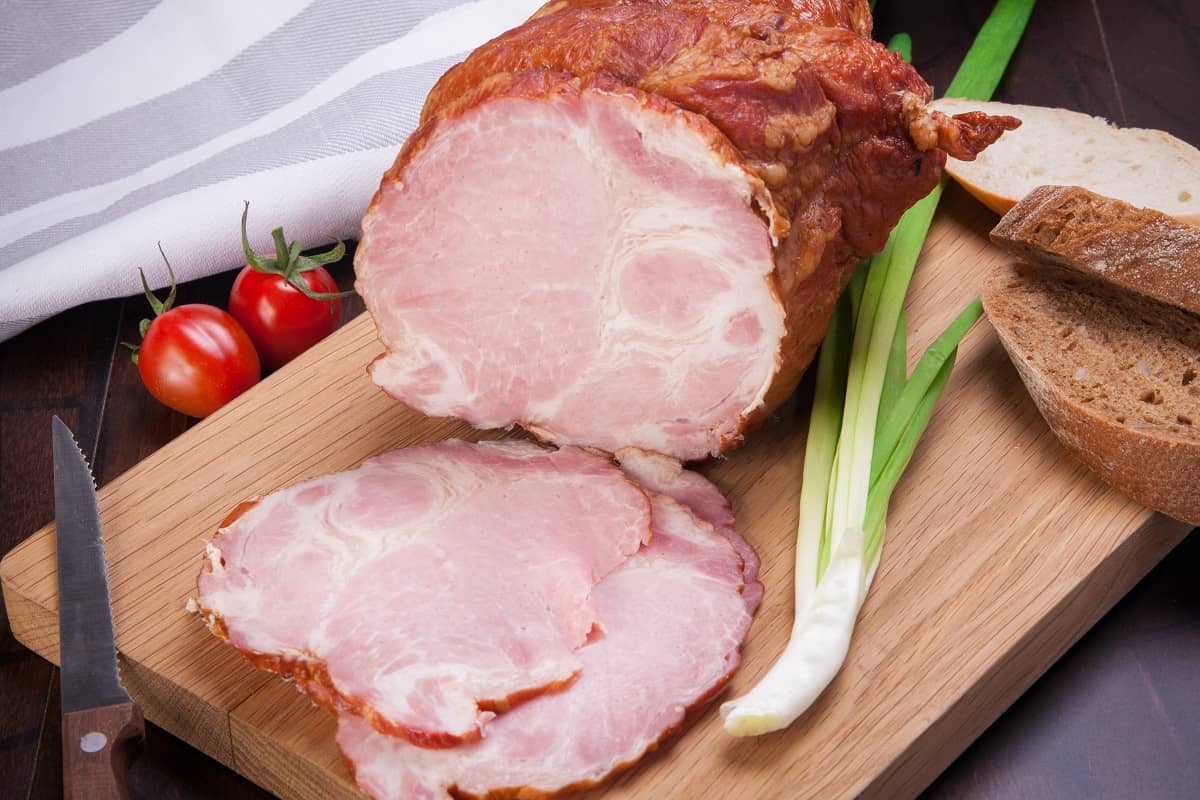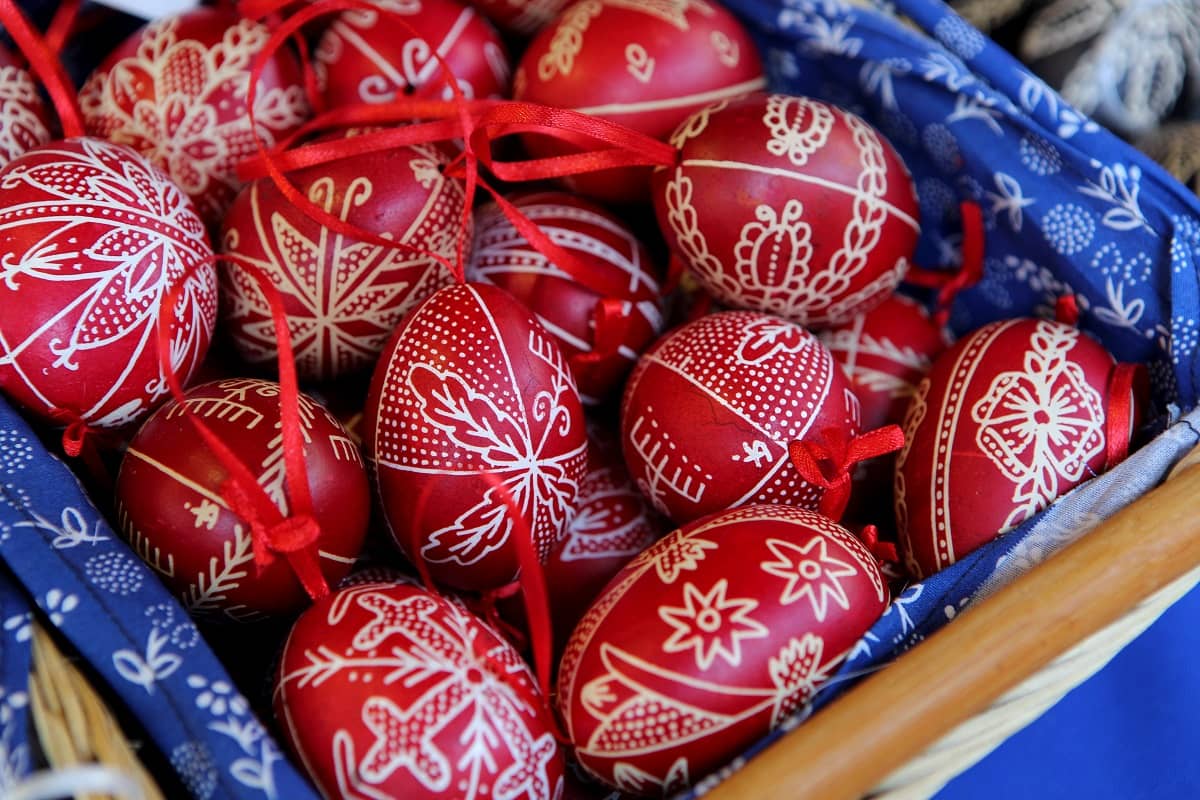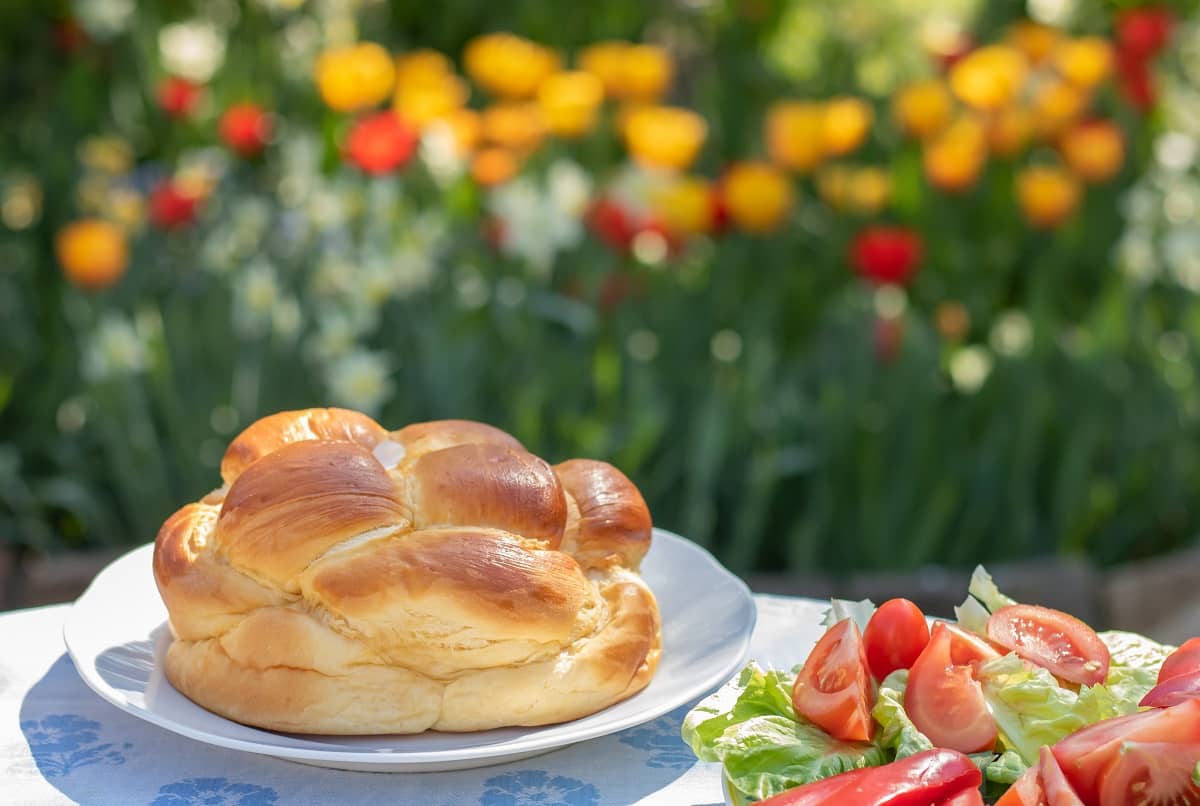Home-made smoked ham
The Hungarian cuisine is heavily meat-based and the Easter menu also includes a lot of meat. The main dish on the table is always the Easter ham. Centuries ago, when a pig was slaughtered during winter on a Hungarian farm, the family reserved the best ham for Easter. They took special care of it by preserving the meat with salt and smoking. In the end of the long Lenten season, Easter is the first time when religious people are allowed to eat meat. The tradition holds that people should take the food (along with the ham, eggs, horseradish, and braided loaf) to the priest on Easter Sunday to hallow them. Despite the fact that today most households have modern devices to preserve food (e.g. deep freeze, refrigerator), it is still very popular to smoke ham. Of course, not everyone can get home-made ham, but if you want to try it, you should search for it at the food markets.

Hard-boiled eggs
Traditionally, women and girls decorate eggs which they offer to men and boys who arrive on Easter Sunday with a short and funny poem. However, eggs are not only presents for men but also part of the Easter menu in various dishes as the decoration on salad bowls (e.g. Russian salad), or they are also an indispensable part of Easter breakfasts. The egg has several symbolic meanings such as the symbol of resurrection in Christianity or fertility and life in folk traditions, especially referring to spring.

Horseradish
You can also find fresh seasonal vegetables on the Easter table such as tomatoes, paprika, green onion radish or cucumber. However, the most popular Easter speciality is horseradish which is both a spice and a herb, and has numerous health benefits. It helps your digestion and blood circulation while it also contains calcium, magnesium and vitamin C. Because of its spicy flavour, Japanese people gave the name “Western wasabi” as the botanical name of horseradish. Importantly, supermarkets and shops sell most of their horseradish supply around Easter so don’t forget to get your own very soon!
Fresh milk-loaf or “Kalács”
Milk-loaf is a kind of sweet bread which is very similar to brioche and has a unique braided shape. It is also called the “Easter cake” because traditionally it is considered to be an Easter food. It’s flavour perfectly accompanies the ham and the boiled eggs and it is relatively easy to make. You only need a few ingredients such as sugar, salt, yeast, milk, eggs, flour, and butter. (Some of the receipts also mention dried fruits but they are optional.) The slightly sweet milk-loaf enhances the smoky-salty taste of the ham and the pickled horse radish, that’s why Hungarians always choose this traditional combination to eat.

Special dessert: Hungarian Easter cheese or “sárga túró”
To complete our non-exhausted list of Easter dishes, we finally brought a real curiosity which is called the Hungarian Easter cheese or “sárga túró”. This egg and milk-based dish is very similar to cheese in texture but it has quite sweet flavour. It is especially popular in North Eastern Hungary, notably in Szabolcs-Szatmár-Bereg County and in the Hajdúság. It may sound unusual, but if you like combining sweet and salty flavours, it goes well with the smoky ham and the milk-loaf.
Hungarian cuisine has its own traditions and tastes in every season including Easter. If you are interested how the salty ham, boiled egg and fresh milk loaf tastes together, give it a try and experience the Hungarian way of celebrating! Do you want to read more about Hungarian traditions and folklore connected to Easter? Then check out our article HERE!
Links and sources: magyarország.hu – Magyar húsvéti szokások, Daily News Hungary – Traditional dishes of Easter in Hungary, Favourite Hungarian ingredients: Horseradish , Hungarian Easter recipes, Budapestbylocals.com – Hungarian Easter recipes, Hungariantidbits.com – Hungarian Easter Cheese Sárga túró,
Source of the pictures: Photo by Сергей Орловский on Unsplash